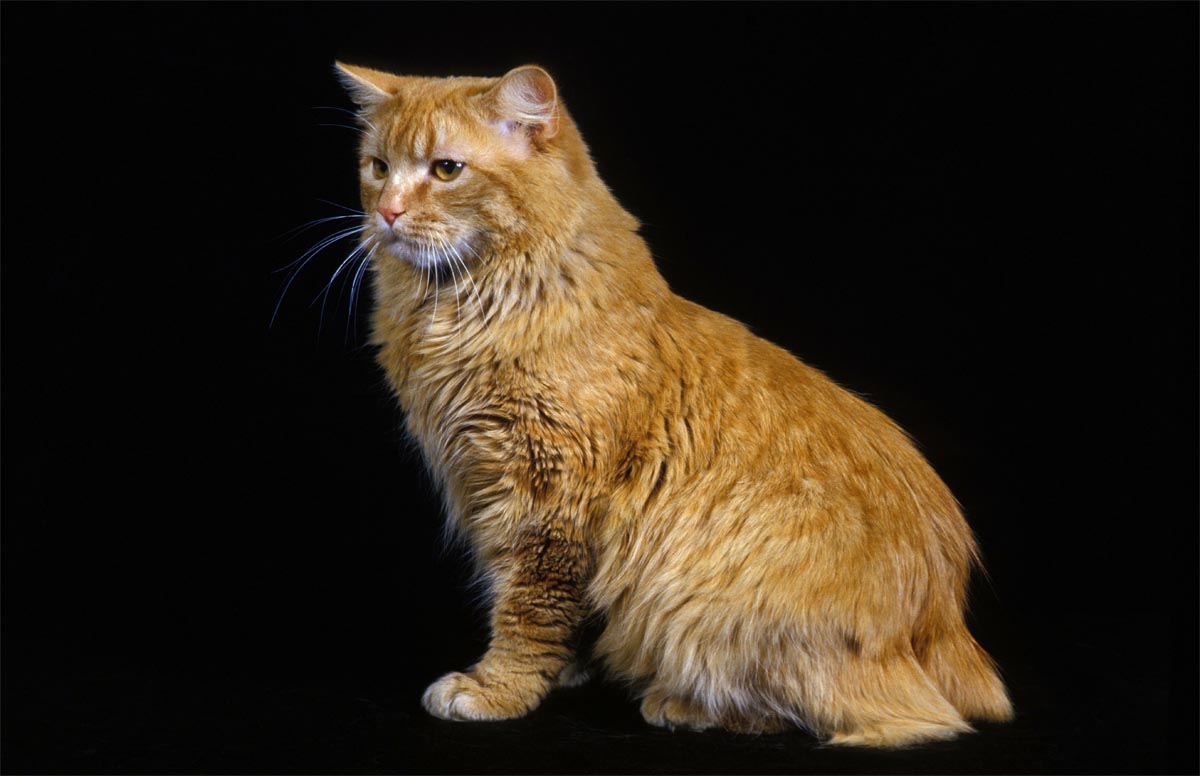History
Pronounced kim-rick, the Cymric is a longhaired Manx cat. The breed gets its name from the Celtic word for Wales, Cymru and was given to the breed due to the close proximity of Wales to the Isle of Man, where the Cymric comes from. Some societies and countries refer to the breed as the Longhaired Manx.
Cats were brought to the Isle of Man several centuries ago, and it is believed the Manx mutation took hold due to the island’s isolated population of cats. Longhaired Manx were occasionally born to short-haired cats but were discarded as unwanted variants. The long-haired gene is recessive, so a short-haired cat can carry the long hair gene, and if both parents carry the gene, produce some longhaired kittens.
The Manx gene (symbolised by an M) is dominant, and therefore only one copy is required for the offspring to inherit the trait. In its homozygous form (two copies of the gene are present), it is prenatal lethal, and as the term suggests, the kittens die before they are born. Therefore you can only breed a Manx/Cymric to a non-Manx/Cymric.
The Cymric came to the fore in the mid-1960s when Canadian breeder Althea Frahm began to show and exhibit these “Manx mutants”. The name was later changed to Cymric by Cymric breeders Blair Wright and Leslie Falteisek.
The breed was accepted for Championship status in 1976 with the CCA (Canadian Cat Association) and is now accepted by virtually all the cat associations under either the name Cymric or Longhaired Manx.
Appearance
As would be expected, the Cymric is similar in appearance to the Manx but has a semi-long coat. It is a sturdy and muscular cat of medium size. The hind legs are longer than the front legs making the back slope upwards. The overall impression of the Cymric should be one of “roundness”.
They have a double coat that is soft and thick. The undercoat is thicker than the outer coat. All colours and patterns are accepted except for the colourpoint (Himalayan) colours (i.e., pointed colours).
The tail comes in several lengths, as below:
- Rumpy (true Manx) have no tail at all
- Rumpy riser where a small number of tail vertebrae can be seen or felt
- Stumpy where the tail is longer but deformed.
- Longie the tail is longer than the previous three but shorter than the average tail on a cat
The head is round with a sloping nose and prominent cheeks. The ears are medium, broad at the base and set wide apart. The eyes are large and round and slightly sloping towards the ears. All eye colours are permitted.
Personality
The Cymric is an intelligent and loyal breed of cat who bond closely with their human family.
They are calm and quiet compared to some of the more active breeds. But they do enjoy playing and can be taught to play fetch. The Cymric is often described as “dog-like” in personality.
The hind legs are strong, and the Cymric is known to be an exceptional jumper.
They are extremely gentle cats and are known to get along well with children, making them an excellent family pet. They also get along with other pets.
Health
As with the Manx, the Cymric is generally a hardy breed of cat; however, some can be prone to arthritis, leg stiffness and Manx Syndrome.

